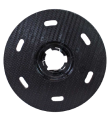
Understanding Mold Remediation Tools
Yes, you can certainly use mold remediation tools yourself, but it’s essential to have a good understanding of what these tools are and how they work. Mold remediation tools are specialized equipment designed to help in the removal and cleanup of mold infestations. These tools can range from simple items like scrub brushes and cleaning solutions to more complex machinery like HEPA vacuums. Knowing how to use each tool correctly is crucial for effective mold remediation.
One of the key aspects of understanding mold remediation tools is knowing when and where to use them. Different tools serve different purposes in the remediation process. For example, HEPA vacuums are excellent for removing mold spores from surfaces, while air scrubbers help in filtering and cleaning the air of mold particles. By understanding the functions of each tool, you can address mold issues effectively and efficiently.
Moreover, getting familiar with the safety features and operational procedures of mold remediation tools is vital. Before using any equipment, take the time to read the user manuals, attend training sessions if available, and ensure you have the necessary protective gear. Understanding how to operate the tools safely not only protects you but also ensures the best results in your mold removal efforts.
Assessing the Risk Level
When considering whether to use mold remediation tools yourself, it’s crucial to assess the risk level of the mold infestation. Minor mold issues in small, well-ventilated areas may be manageable for DIY projects with the right tools and knowledge. However, for extensive mold growth or situations where there are health concerns, it’s recommended to seek professional assistance.
Before starting any remediation work, evaluate the extent of the mold problem. Look for visible signs of mold, such as discoloration or musty odors, and assess the affected area’s size. If the mold covers a large area, exceeds 10 square feet, or has been present for an extended period, it’s generally safer to consult with mold remediation experts to ensure the proper handling of the situation.
Remember that certain types of mold, like black mold (Stachybotrys chartarum), can pose significant health risks. If you suspect the presence of toxic mold or if individuals in the household experience unexplained health issues, it’s best to err on the side of caution and contact professionals trained in dealing with hazardous mold situations.
Safety Precautions Before Use
Before diving into mold remediation tasks, ensure you have taken all necessary safety precautions. Mold exposure can have adverse effects on health, so protecting yourself during the remediation process is paramount. Start by wearing appropriate personal protective equipment (PPE) such as gloves, goggles, and respirators to prevent contact with mold spores and mycotoxins.
Ventilation is also crucial when using mold remediation tools. Open windows, use fans, or set up exhaust systems to ensure adequate airflow during the cleanup process. Proper ventilation helps in reducing the concentration of mold spores in the air and minimizes the risk of inhaling harmful particles.
Additionally, creating containment barriers using plastic sheeting and tape can prevent the spread of mold spores to uncontaminated areas of your home. By isolating the work area, you can limit the exposure to mold and reduce the chances of cross-contamination during the remediation work.
Using Mold Remediation Tools Properly
To use mold remediation tools effectively, it’s crucial to follow the recommended procedures for each tool. Whether you are using vacuums, scrub brushes, or antimicrobial agents, understanding the right techniques for application is key to successful mold removal. Always refer to the manufacturer’s instructions for guidance on tool operation and safety precautions.
When using machinery like HEPA vacuums or air scrubbers, ensure they are in good working condition before starting the remediation process. Regularly check filters, hoses, and other components for any damage or wear and tear. Proper maintenance of the equipment ensures optimal performance and helps in achieving thorough mold cleanup.
Moreover, after using mold remediation tools, proper cleaning and storage are essential to prevent contamination and prolong the lifespan of the equipment. Thoroughly clean all tools after each use, and store them in dry, well-ventilated areas. Maintaining your tools properly not only ensures their effectiveness but also extends their usability for future mold remediation tasks.















